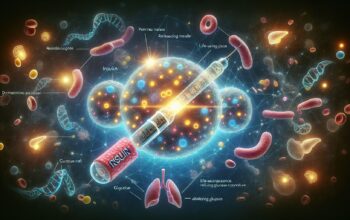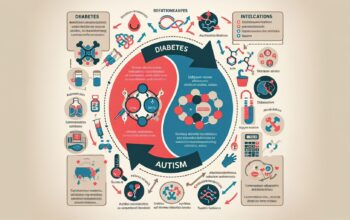Your journey toward understanding the complex relationship between diabetes and insulin starts here. It’s a story of a vital hormone, essential for the body’s functioning, yet the primary player in one of the most prevalent chronic diseases worldwide. Over 422 million people were living with diabetes in 2014, according to the World Health Organization. This alarming number creates a dire urgency for us to explore more closely the connection between insulin and this chronic disease.
Insulin: A Crucial Hormone
To truly understand diabetes, it’s essential to delve into the nature and function of insulin. Insulin, a hormone produced by beta cells in the pancreas, serves a fundamental purpose in regulating blood glucose levels. Following a meal, carbohydrates are broken down into glucose, causing an increase in blood glucose levels. This rise triggers the release of insulin, which then goes to work, acting like a key to unlock the body’s cells to allow glucose to enter and be used as energy. This essential gatekeeper function of insulin ensures that the body maintains blood glucose levels within the normal range.
The Diabetes Challenge
When the system gets disrupted and insulin cannot perform its monumental duty, you’re faced with a health challenge named diabetes. Diabetes, now not an unfamiliar term in any household, is a chronic disease where your body struggles to manage blood glucose levels. It’s categorized into two main types: Type 1 and Type 2 diabetes, each with unique relationships with insulin.
Type 1 Diabetes: An Immune Invasion
Type 1 diabetes is like an untimely invasion where the immune system mistakenly attacks the insulin-producing beta cells in the pancreas. This autoimmune response results in the body’s inability to produce sufficient insulin. As a result, glucose cannot enter the cells and builds up in the bloodstream instead, leading to high blood sugar levels.
In 2021, there are over 1.6 million Americans living with type 1 diabetes, according to the American Diabetes Association (ADA). Although it can develop at any age, type 1 is most commonly diagnosed in children and young adults, often leading to a lifelong dependence on external insulin to survive.
Type 2 Diabetes: A Sneaky Resister
With type 2 diabetes, the plight is slightly different. It starts stealthily, with the body becoming resistant to insulin. In response to this resistance, the pancreas produces more insulin to curb rising glucose levels. However, over time, it fails to keep up, causing a deficient insulin state.
The CDC reports that around 90-95% of individuals with diabetes have Type 2, making it the most common form of diabetes. Unlike type 1, its onset is usually later in life and is often related to lifestyle factors such as poor diet and lack of exercise.
Role of Insulin Therapy
The establishment of insulin therapy transformed the landscape of diabetes management. For individuals with type 1 diabetes, insulin therapy becomes an immediate necessity. From insulin injections to insulin pumps, insulin therapy allows them to regulate blood glucose manually, replacing the role the destroyed beta cells would have played.
For those with type 2 diabetes, lifestyle modifications typically commence their treatment journey. But as the disease progresses and insulin production declines, they too may need to turn to insulin therapy as a vital solution.
The choice of insulin type, dosage, and timing is individualized, considering the patient’s lifestyle, age, blood sugar levels, and disease severity. It’s a fine art of maintaining a delicate balance, as too much insulin can cause dangerously low blood glucose levels (hypoglycemia), and too little can lead to high blood glucose levels (hyperglycemia).
Living with Diabetes, Living with Insulin
Managing diabetes asks for an ongoing commitment. Your constant companions become regular blood glucose checks, insulin injections, and lifestyle tweaks to ensure blood glucose levels don’t hit dangerous highs or lows.
While living with a chronic disease like diabetes might seem daunting, advancements in the field bring rays of hope. From the development of the artificial pancreas to the promise of beta-cell regeneration – the journey towards a cure is more hopeful than ever.
In your understanding of how inseparable insulin and diabetes are, you learn a crucial lesson: the management of diabetes is more than just about insulin. A holistic approach involving diet, exercise, stress management, regular follow-ups, and medication compliance can make a world of difference.
Final Thoughts
The relationship between insulin and diabetes is complex, yet fascinating. Decoding this intricate relationship shines a light on understanding diabetes better, leading to more effective management strategies, and ultimately, a journey towards healthier living. Going forward, remember that each step, each discovery made in this arena, brings the world one step closer to taming this global health epidemic.
Every story of diabetes is an individual one. And while society continues the collective fight against this chronic disease, individual battles are won every day. Remember, understanding your condition, accepting the role of insulin, and committing to lifestyle changes can indeed pave smoother paths in your diabetes journey.




